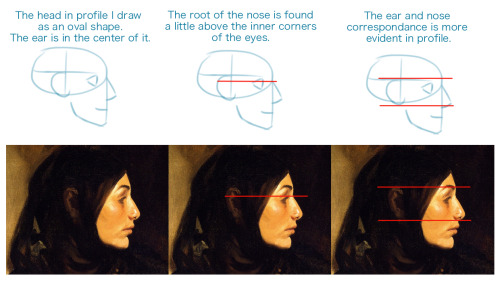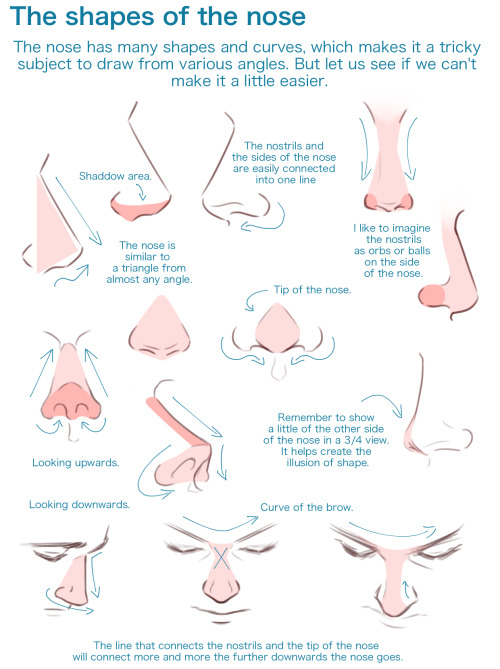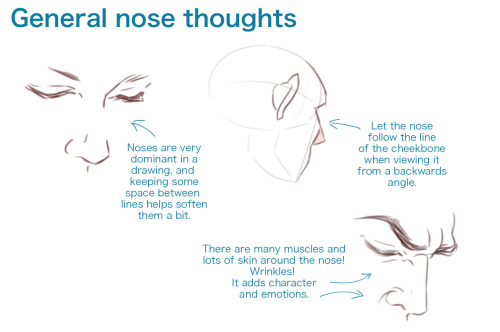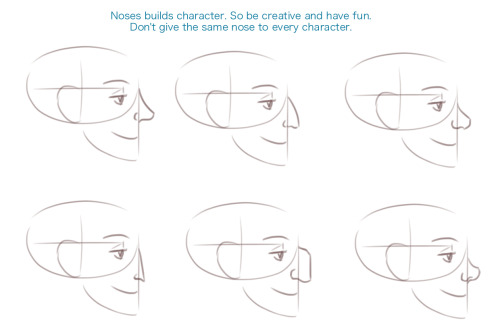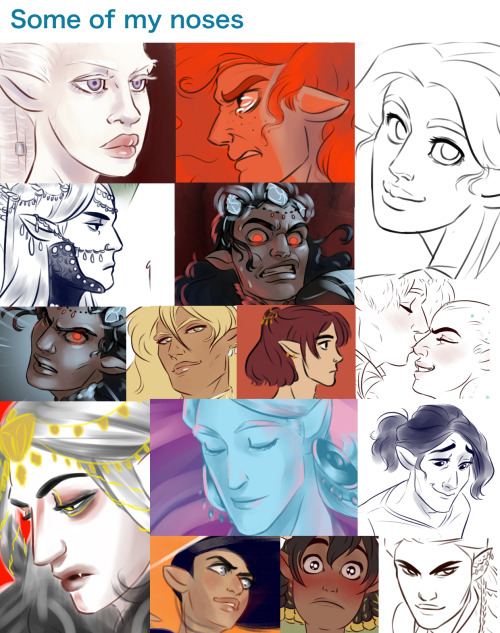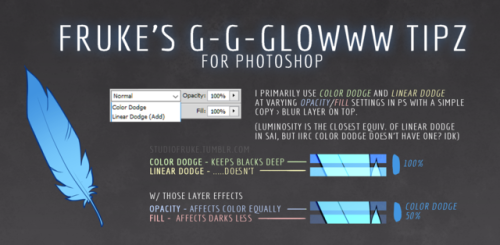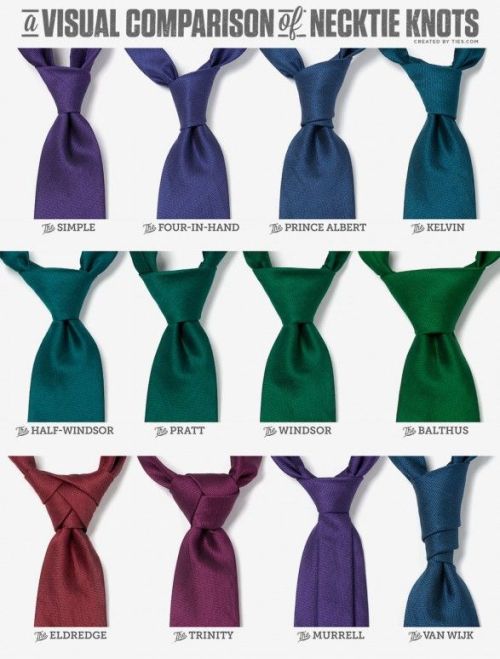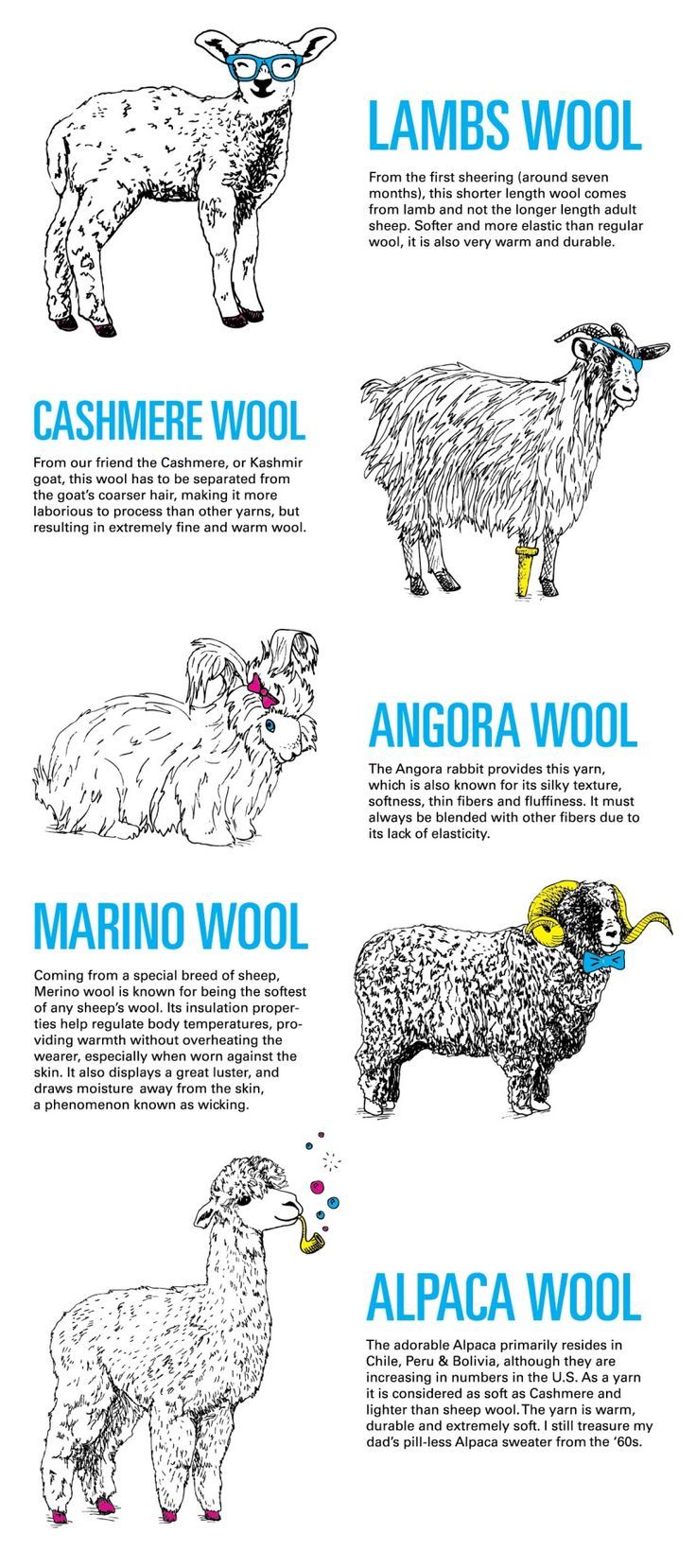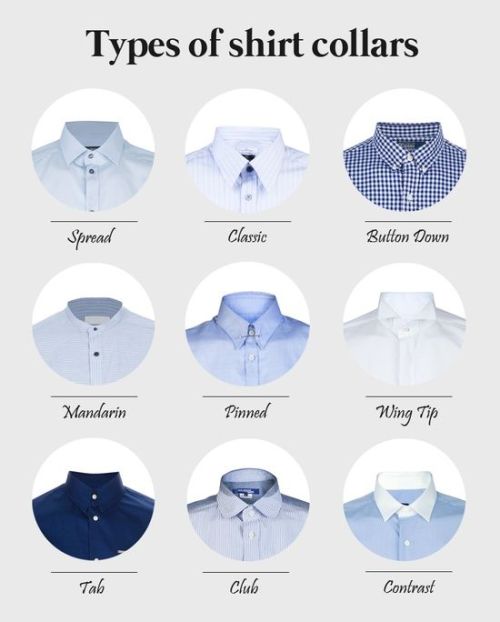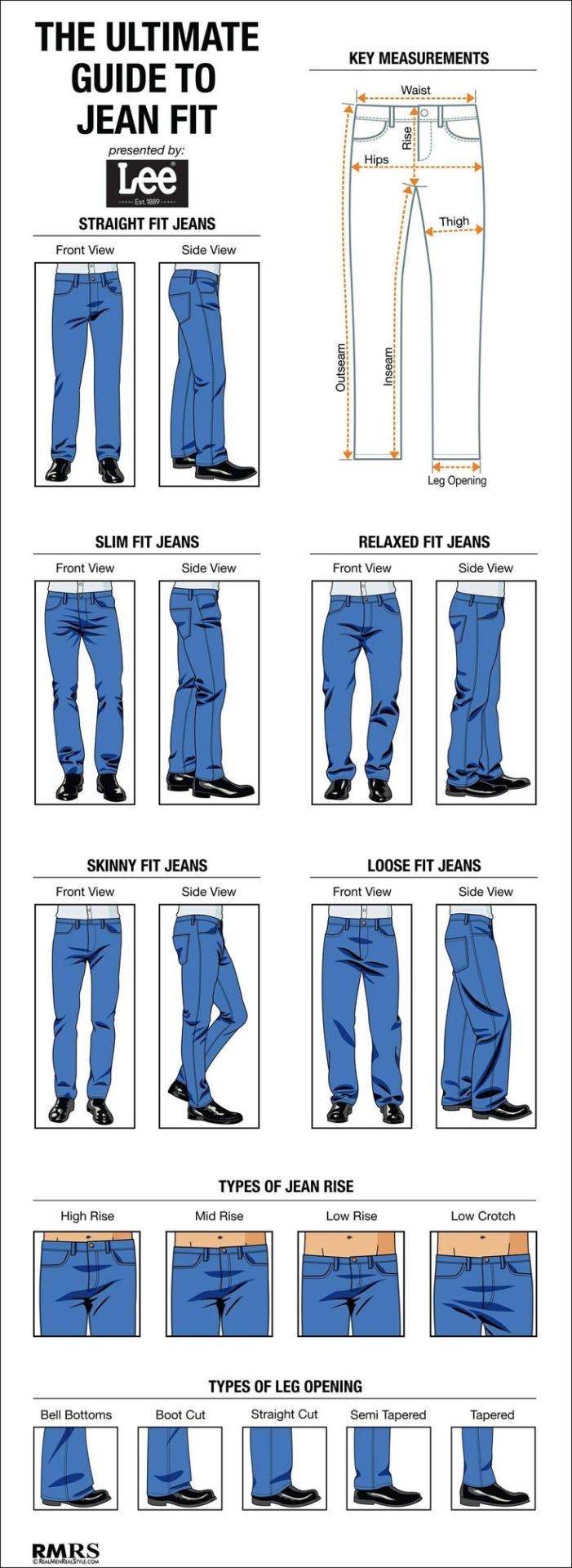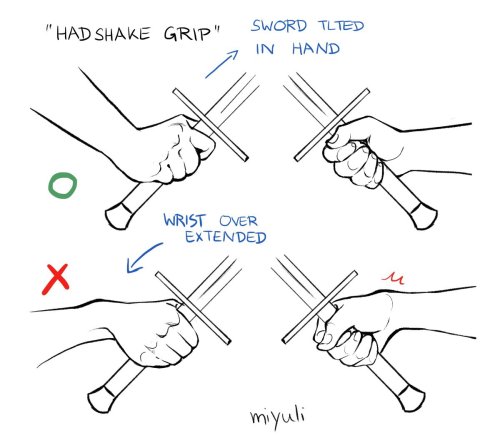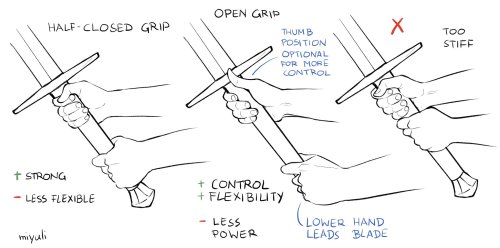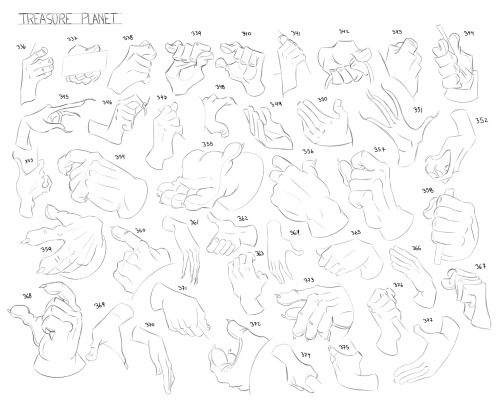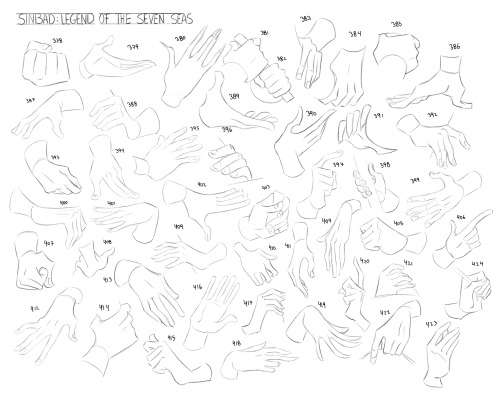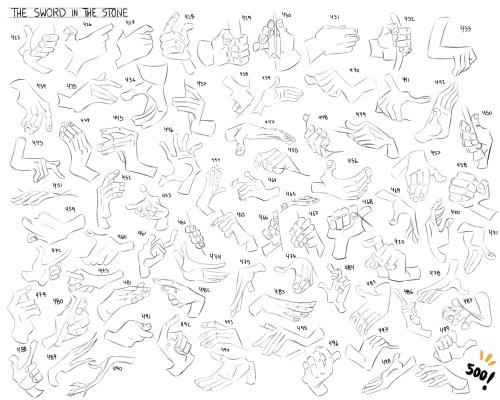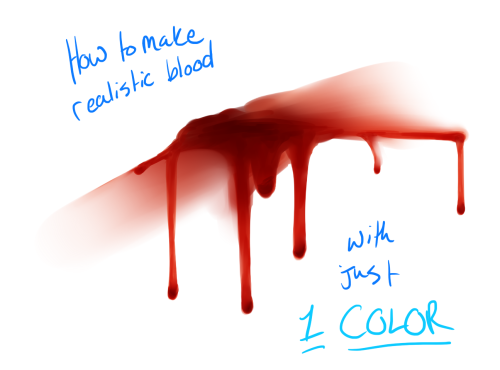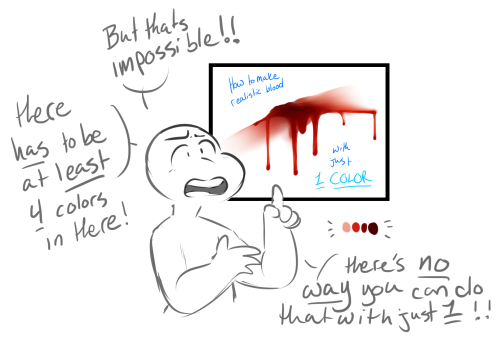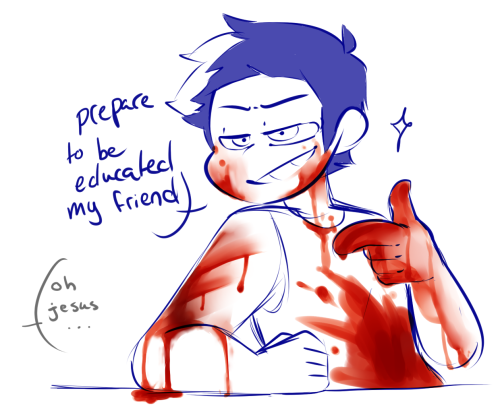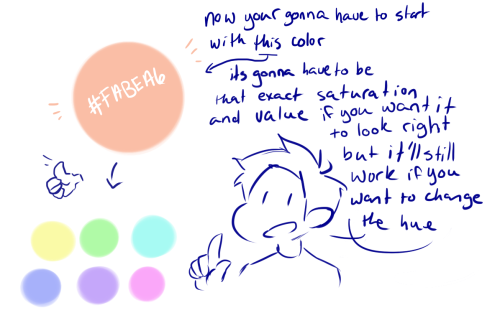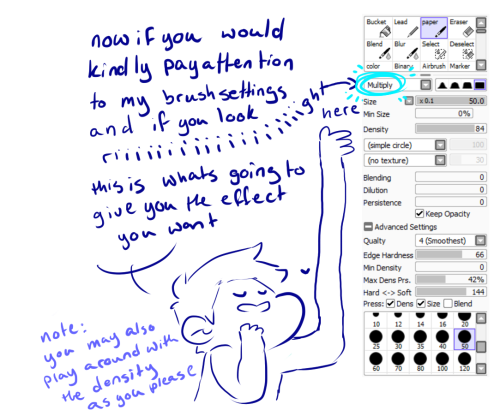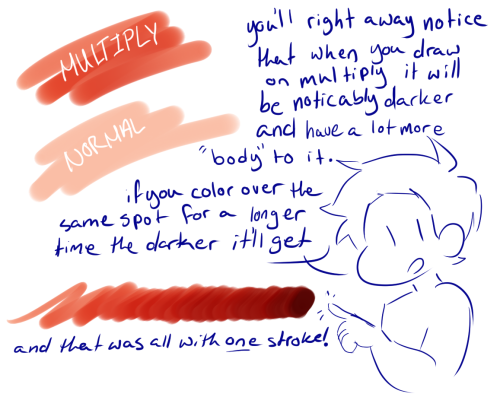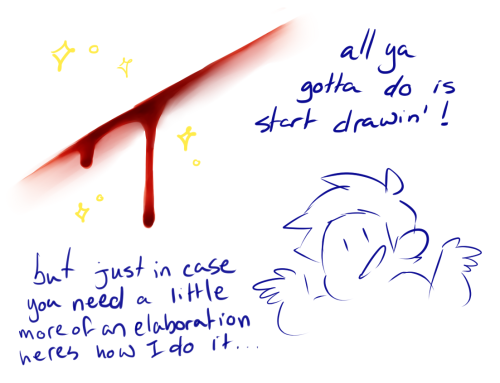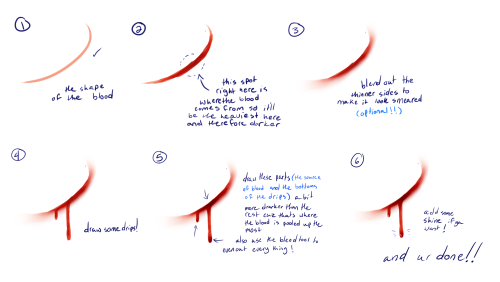
177 posts
Latest Posts by scrapbox-in-the-attic - Page 6




Another basic tutorial, this time in line work. If you have any questions in regards to line work, please drop me a message or join my next livestream.
I also have a Patron , where you can find brushes, tutorials, and more!
can you give a run down on skintones?
PART ONE: COLOR SELECTION.
In painting skin tones, a lot of the time I see people choose colors that are over-saturated or unbalanced. There isn’t really an exact art to this that I can explain—you just need to get a feel for what saturation balance you need for that particular skintone. Here are some examples of what I usually pick.

As you can see, I used different base colors (orange, reddish, yellow) for the skin shades in all three examples. The reason for this is because all skin tones have a different base color besides just Light, Medium, and dark. Some people divide them into categories of “warm” and “cool.” Pantone has some really good examples and references for this.

PART TWO: COLOR VARIATION.
Another big part about drawing and painting skin tones that a lot of people forget is how skin thickness affects color variation. The presence of bone, blood, and muscle underneath the skin affects its colors. This is especially noticeable on the face.

The colors here are a little exaggerated to show my point, but with a little adjusting and blending…

Voila! Subtle, but more realistic.
PART THREE: DETAILS.
Our skin is the largest organ on our body, and as our body’s first line of defense against the outside world, it’ll be covered with tiny details and imperfections. Things like sunburns, tans, freckles, scars, and facial hair all add character to your subject matter. Here are some examples!
TANS: Everyone tans differently, depending on your ethnicity and skin tone. Fair skinned folks tend to burn more than tan, which means you’ll need a more startling, eye-catching red.If you have a skin type that tends to tan more, the color will be more brown than red. For black skin tones, the tan is less red. (And while we’re on the subject: black people DO tan, so it’s important for you to put on sunscreen and be careful in the sun, too.)

Those are the areas that the sun tends to hit the most—and things like goggles, hats, and masks can change the shape of that area.
FRECKLES AND MOLES: Freckles are also products of the sun. Some people have freckles that stay year-round, while others have freckles that fade in the winter and return in the summer. Moles are skin cells that grow in a cluster instead of being spread throughout the skin. When exposed to the sun, they tend to darken. (Another note on skin health: if you have any oddly-shaped/colored moles, moles that have changed color, size, or shape, or anything of the sort, please check with your doctor!)
Freckles like to cluster around each other, sort of like stars, and they vary greatly in size. You can have a few freckles in one place, or a lot of freckles in multiple places. Most commonly freckled areas are your face, shoulders and neck, back, and forearms.

FACIAL HAIR: Facial hair also affects the colors of the face. For simplicity’s sake we’ll be using black hair, as it is the most noticeable. Facial hair usually grows in these areas, and can make the skin look blueish/grayish because of the darker hairs beneath the skin. If your hair is red, this also very noticeable.

END NOTE.
There you go! That’s about all I can think of at the moment for skin tones. As always, references and practice are your best friend (and so is this neat little trick that pheberoni has.) Good luck with your arting!
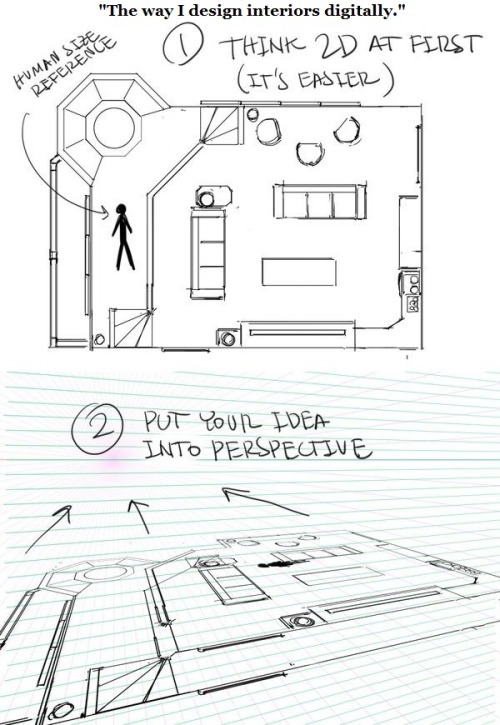

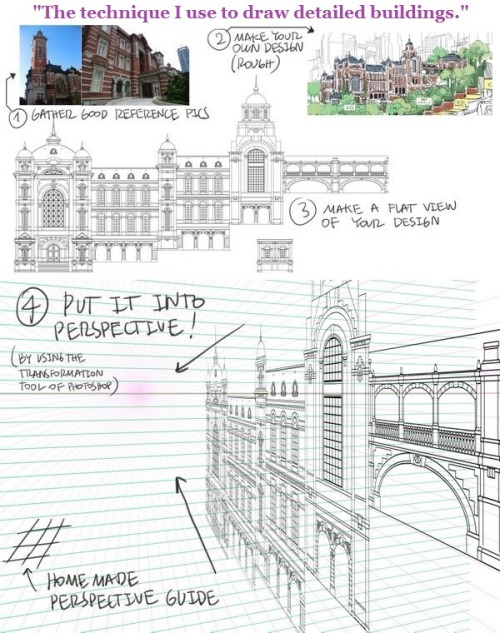
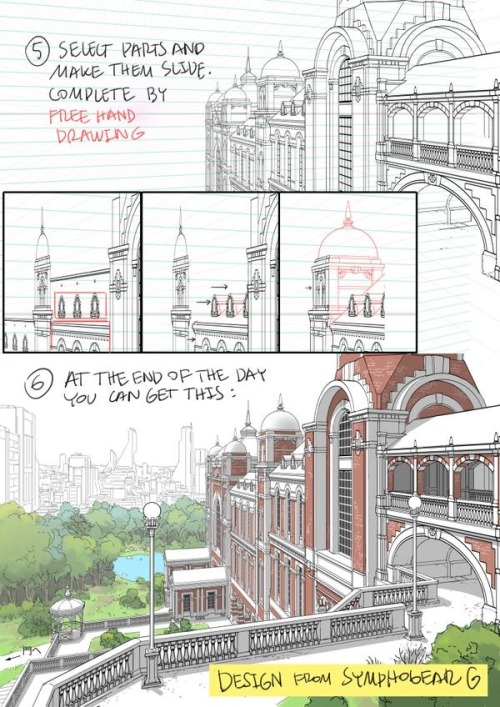




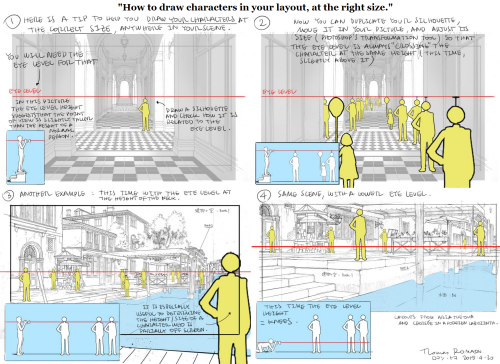
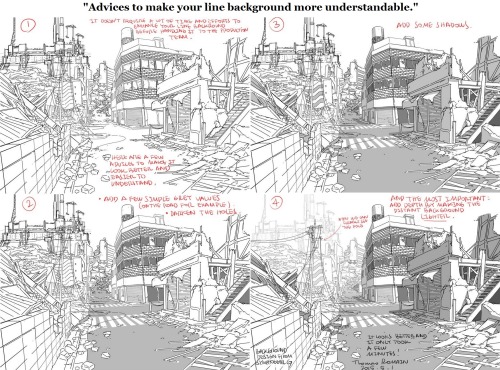
A master post of Thomas Romain’s art tutorials.
There’s not enough space to post all of them, SO here’s links to everything he has posted (on twitter) so far : 1 2 3 4 5 6 7 8 9 10 11 12.
Now that new semesters have started, I thought people might need these. Enjoy your lessons!
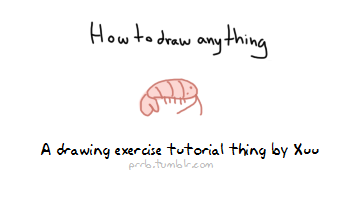

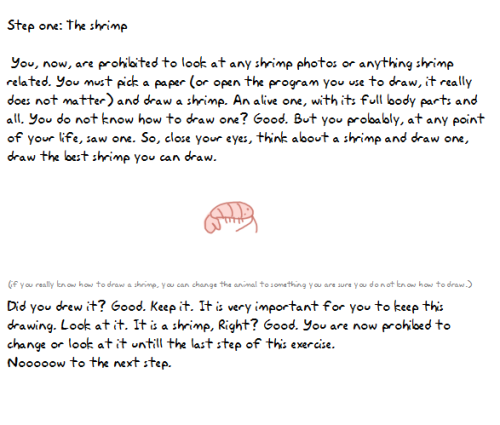
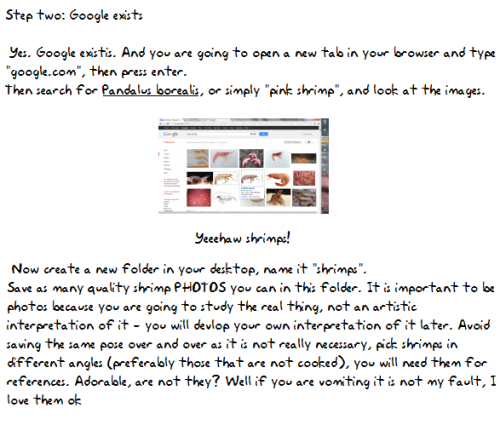
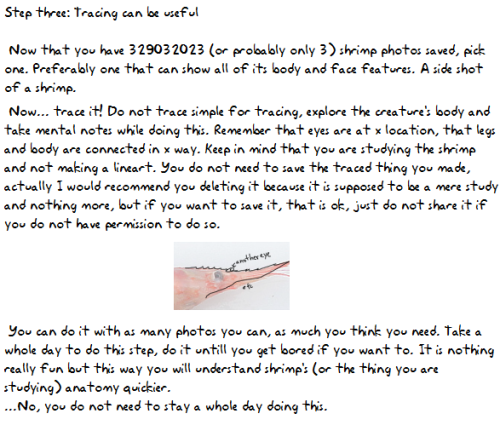
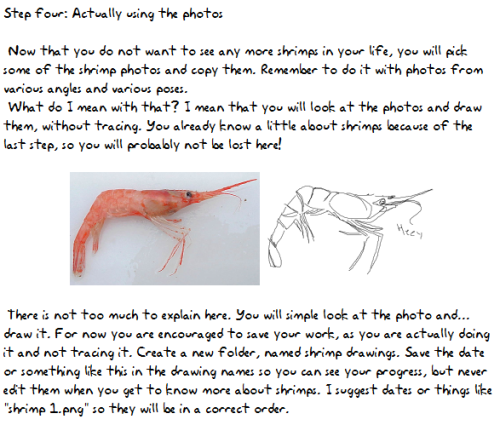

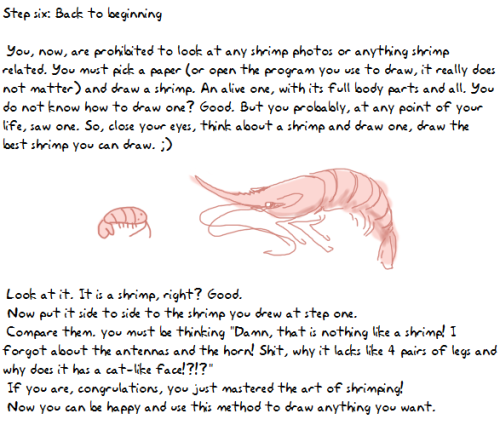
How I pratice drawing things, now in a tutorial form. The shrimp photo I used is here Show me your shrimps if you do this uvu PS: lots of engrish because foreign
Attention anyone who needs hairstyle references
I want to introduce all of you to this amazing place called the ukhairdressers style gallery.
It’s basically a massive database full of high-quality images of different hairstyles. I mean, look at all the options in that sidebar (and part of it’s cut off):
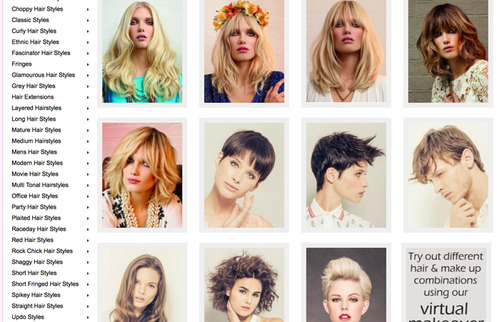
In total they have 976 pages of hairstyles with about 17 styles each, that’s about 16592 hairstyles to look at.
Look at all the stuff they’ve got! Long hair:

Short hair:

Straight hair:

Curly hair:

Afro hair:

Men’s hair:

Hair on older models:

Extra-fancy hair:

Even crazy avant-garde hair:

So if you need help with designing a character or you just want to practice drawing hair, this is a fantastic resource.


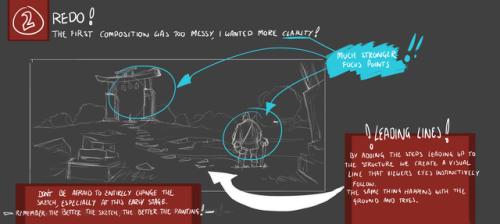


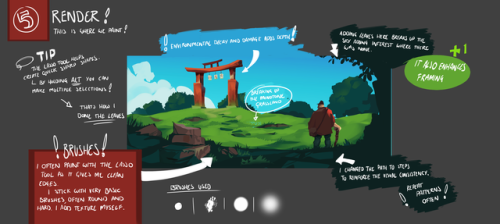


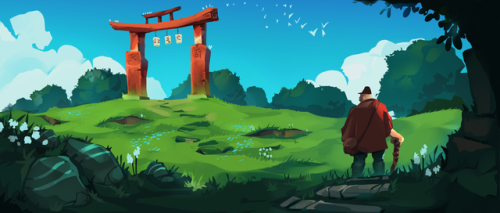
!! ART TUTORIAL !!
This is my first real attempt at doing a walkthrough for one of my landscapes, I’d really appreciate some feedback!
it is pretty much my workflow process, there’s always something slightly big to change during render I should have solved earlier!
Anyway everyone, feel free to message me if you have any questions and I hope this helps anyone!!
“Where should I host my webcomic?”
If you’re making a new webcomic it’s often difficult to decide where to put it, especially since if you need this kind of resource you’re probably just starting out. So, here’s some info I’ve gathered on some popular hosting platforms and their benefits/downsides. I’m not an artist, so this isn’t an inside scoop, but I’ve put some research into this and I know what artists have said about their experiences. All of these platforms are free and public to use unless noted otherwise.
Tapas (aka Tapastic)
Tapas is a website and app that is made for hosting webcomics.
Example - Example
Benefits:
VERY well known, one the most popular hosting platforms around.
It’s mostly set up so users check out as many comics as possible -> easier time attracting readership.
Once you start getting subscriptions it starts figuring out what other comics get similar readership. It’ll start recommending your comic and you’ll get more consistent readers.
It’s very easy to use and smoothly designed. Pefect for new artists.
There’s kind of a social aspect to it? I don’t know how to describe it. Every user has a page you can comment on and there’s a robust comment system on pages/episodes.
TAPAS TIPPING. A brilliant, original system. Users can watch ads for “tapas coins”, which they can “tip” towards their favorite artists! This turns into free real money for you. You can also apply to tapas premium to make a comic or novel that’s unlocked per episode with coins. (novels are only acessible on the tapas app, which it seems to be moving towards)
Downsides:
It’s very reader-centered. Not so much on artists.
In fact it recently tried a really sketchy move where it added a clause to its terms of service potentially restricting where else artists could post even the free comics. It was later removed after sitewide backlash and mass comic removal.
No control over how your website appears. You get to make a banner and an icon, that’s it. This could be a good thing, since you don’t have to worry about it and its theme works very well.
Sometimes it’s a little buggy. I’ve noticed a lot of artists post with links to other platforms and apologies because it won’t let them add an update.
How to Join:
Create a free account.
Create your comic.
LINE Webtoon
Example - Example
Webtoons is a free website and app for hosting webcomics.
Benefits:
Similar to Tapas, but with a more high-class feel.
(By that I mean I see very few debut artists and more professionals there.)
It’s about as easy to use, and it’s becoming much more well-known, especially after the mass exodus to Webtoons after the Tapas TOS incident. They also advertise comics on others’ pages with similar readership, but it’s kinda skewed towards comics that already have a lot of readers. I get the feeling that it’s focused on providing a good experience for its users more than reading a lot of comics.
You still cannot control how your site works, but again, what they give you is very good.
Every month the staff chooses some comics to become “featured” artists. Featured Artists make $2000/month as long as they don’t post on any other webcomic sites. As the name implies, they also advertise you more. They really like to mention this benefit.
Downsides:
You might not get any traffic? Mostly the biggest problem is just having to use its framework which is designed for webcomics.
How to Join:
Create a free account.
Create your comic.
Smackjeeves
Example - Example
Smackjeeves is yet another free host for webcomics.
Benefits:
You get a subdomain automatically, which you can heavily customize the appearance of.
It has a very social format compared other hosts.
Smackjeeves also recommends comics, but not on other comics’ pages. You can explore comics throughtout the site.
Downsides:
I personally find the website very confusing. I can’t imagine it’s much better on the artist side of things.
How to Join:
Create a free account.
Create your comic.
Tumblr
Example - Example
You’re on it! Tumblr is a social media platfrom that is based on users having one or more blogs to create streams of posts with.
Benefits:
Tumblr blogs already have a “page” format for scrolling through chunks of posts. Just set your post per page ratio to one and voila! Already looks very similar to actual webomic sites.
One of the highlights of Tumblr as a social media platform is being able to manually edit your blog’s HTML. There are even publicly available user-made themes for webcomics.
It’s a social media platform! It’s very easy to interact with your fanbase.
A lot of webcomic fans use Tumblr - it’s well-suited to fandom in particular.
Your updates would in reality be posts on a blog. Readers might reblog them and share your work with other people. It’s by far the best platform for word-of-mouth advertisement.
If you’re reading this you probably already know how to use it.
Downsides:
Tumblr is just … not made for webcomics. At all.
Archiving in particular is very counterintuitive for webcomics. Page urls are not static - “page 2” is the second-most recent update, not the second page. In order to find an individual update you have to actually page back to it or scroll through the default uneditable archive.
How to Join:
Get a free account.
If you already have one, you can simply create a sideblog. But you might want a whole account just for the comic - outgoing likes and asks show up as your main blog, so if you’re using a sideblog it exposes your personal/main blog whenever you interact with fans.
Edit your blog’s theme extensively.
Begin posting your updates.
Custom Website
Example - Example
No external host. Make your own website, just for your comic!
Benefits:
ABSOLUTE CONTROL. You decide how it looks, how it works, and what features it has. Most webcomic sites have similar formats: prominent centered pages (and usually the current update on the “main” page), first/previous/next/recent buttons, an archive, an about page, information on when it updates, etc. But in general everything is 100% up to you.
I cannot stress that ^^^ enough.
No license or restrictions of any kind. Except, like, laws. Obviously.
Many features are easy to add to your website. Disqus (Insertable commenting platform. Sorta structured like Reddit) is getting more and more popular and I haven’t heard anyone mention it costing anything.
You can get ad revenue from your site, and 100% of it goes to you.
Downsides:
Unless you have the skills to make a functional professional website on your own, it costs money. Plus, there’s the relatively small monthly/yearly cost of reserving a domain name.
Finicky and difficult to fix problems. When Tapas eats your update, you wait a day or two before it works again. When the commenting system disappears, you have to call whoever made your website or fix it yourself.
There’s no real way of attracting readership (and ad revenue!) other than word-of-mouth or paying for ads. No handy recommendation system in place. This is ONLY a move for someone who already has a guaranteed reader base. However, almost every popular comic artist eventually gets their own site so it must be worth it past a certain threshold.
How to Join:
Get a domain name and a website.
Post your comic on your new website.
Advertise the heck out of it.
SpiderForest
Example - Example
SpiderForest is a collective of comic artists, not a public service. You must apply to join.
Benefits:
The application process isn’t very strict; it’s there so that it isn’t flooded with low-quality comics. Not sure how I feel about it but it works pretty well for them.
You get the benefits of any vetted group. They advertise you on their main site, and being a member adds credibility to your work.
Even though it is an exclusive group, its policy allows unlimited mirrors, so you can still use anything else you want.
Downsides:
In order to be a member you have to have at least one mirror on a custom site they can link to or host directly on their site. Not much of a downside but still.
Your comic should already exist somewhere else. They generally won’t approve pitches for potential projects, unless you’re already an established creator with previous work to show instead.
It’s not as well known? It’s still pretty high up there.
How to Join:
Apply using the link at the top of their main page.
Be accepted.
Post your comic on your associated Spiderworks site.
Hiveworks
Example - Example
Hiveworks is a for-profit professional organization. You don’t ask to be a member, Hiveworks asks you to join. There’s like a 95% chance you should SAY YES.
Benefits:
Hiveworks gives you a free website (see: custom website benefits)
All Hiveworks sites have a little sidebar advertising other hiveworks comics. They also advertise your comic on their main aggregate site.
They look for good comics, it’s their job. Having their logo on your site is a testament to the quality of your work. You’ll get so many readers and comissions, trust me on this one.
Downsides:
You do have to provide some art to them. They’ll sell merch of your comic (which you get a large cut of!), and you need to provide icons and banners for them to advertise you with. When they do well, you do well, and vice versa.
If you are a member you cannot host your comic any new sites, especially their biggest competitor, SpiderForest. This contract lasts a while. Sometimes you get to keep your existing ones, though.
^^ Contracts. There’s still the tiniest bit of risk, but it’s a reputable organization.
How to Join:
Be asked to by Hiveworks.
Negotiate a contract.
This is all of the things I have been able to learn as a reader. If one or more of them sounds promising for you, try and send a message asking an artist who uses these platforms for what they think. Good luck!

“We Wear Culture” is a collaboration between Google and more than 180 museums, schools, fashion institutions, and other organizations from all parts of the globe. It’s part of Google’s Arts & Culture platform, which is digitizing the world’s cultural treasures, and functions as a searchable guide to a collective archive of some 30,000 fashion pieces that puts “three millennia of fashion at your fingertips,” Google says.
But it isn’t just a database. Google has worked with curators to create more than 450 exhibits on different topics—say, how the cheongsam changed the way Chinese women dress—making the site an endlessly entertaining, educational portal filled with stunning imagery touching on everything from modern Japanese streetwear to the clothes worn at the court of Versailles.
i can already tell this has made writing for historical fandoms – the worst part of which, for me, is absofuckinglutely hands-down the clothing – much easier.
Excellent Reference
I just found this website and am overjoyed. It provides plans for building houses, and is excellent when you need to plan out an interior space for a comic / novel / etc. You pick how many rooms you want the house to have and the style of architecture, then you choose what house you want! It shows a front view of the house, and then floor plans you can work from.
http://www.dreamhomesource.com/
Check it out!

A friend shared this on facebook and I'm putting it here for reference.
If you do more tutorials maybe poses?
How to do better poses:

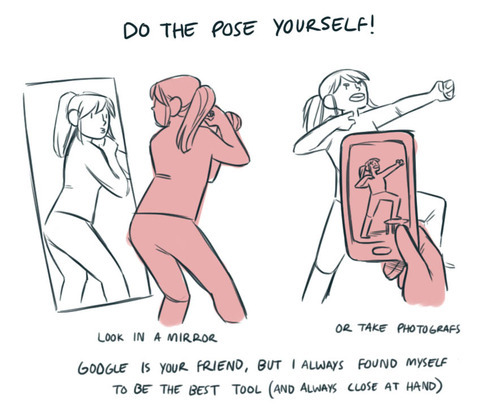
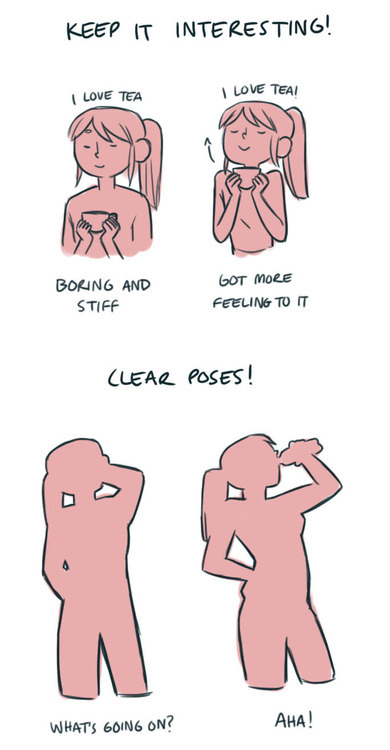
a few things to think about when doing poses, just from the top of my head so it’s not very thorough. Hope it helps!
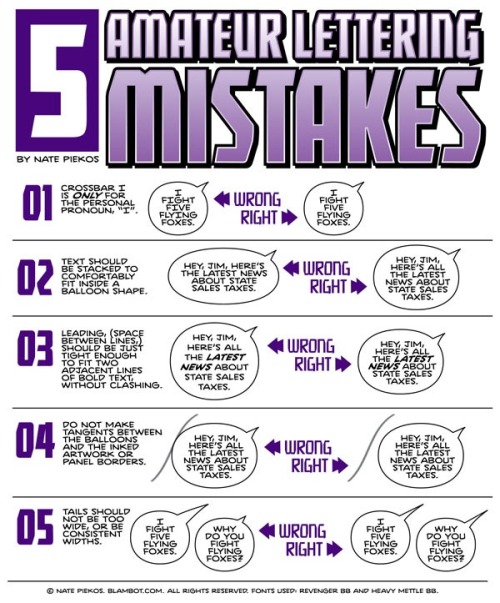
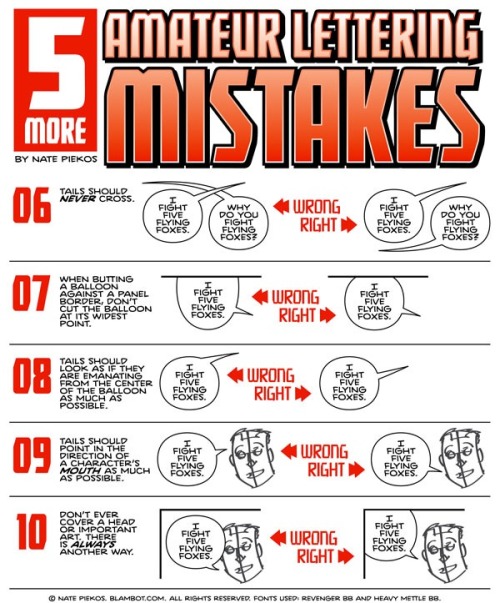
Some good tips about comic lettering from Nate Piekos of Blambot.com






You guys asked me about my ways of doing things so here it is. I’m sorry for my lame english and crappy handwriting , but I hope it’s understandable!
quick proportion tips
- eyeballs are an eyeball width apart - ears align with the top of your brows to the bottom of your nose, and are the center-point of a profile view - lip corners line up to the center of each eye - hands are roughly the size of your face - feet are the same size as your forearm - elbows are aligned with your belly-button - your hands reach down mid-length of your thighs - both upper and lower legs (individually) are roughly the same size as your torso (this is all rough estimates for proportion! feel free to add more to help others)










